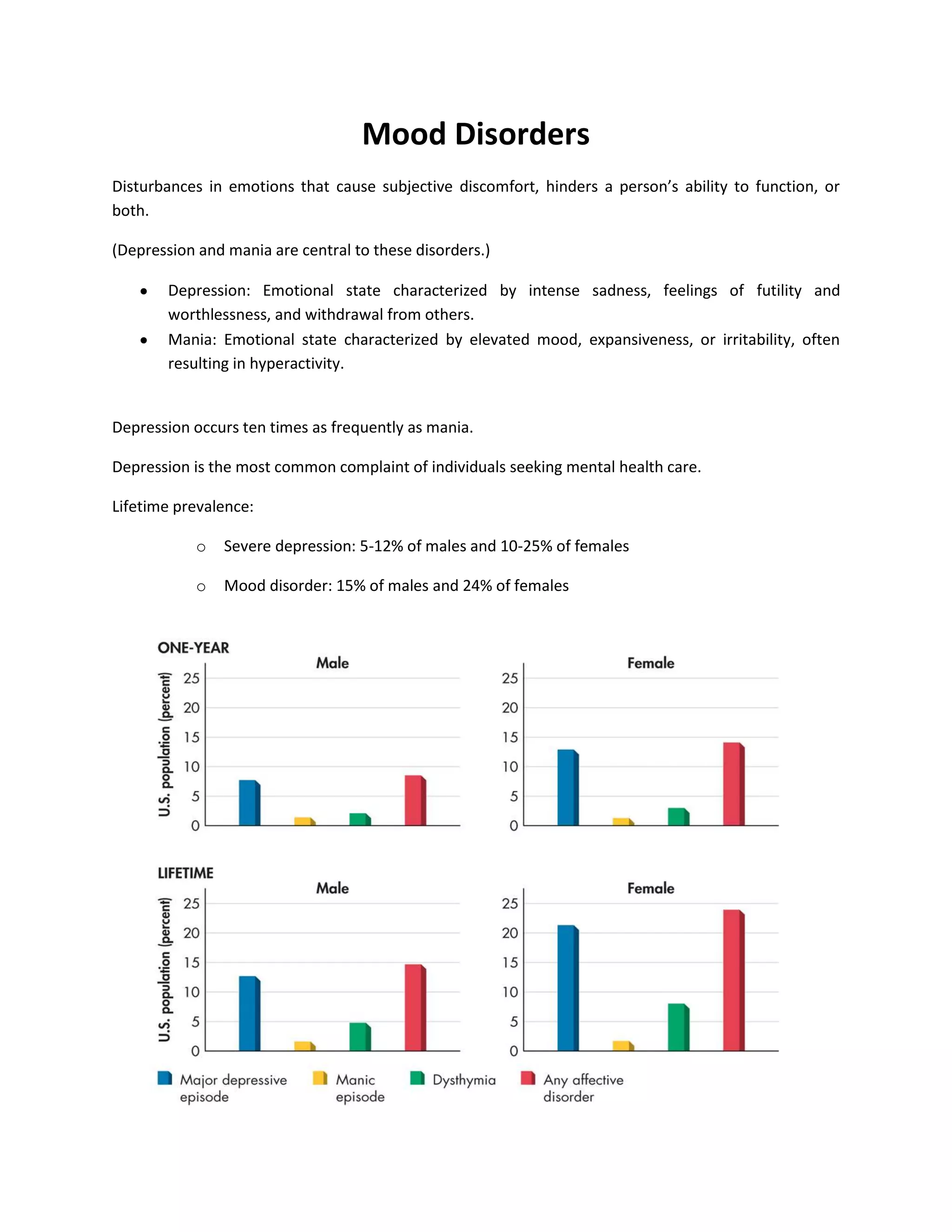Mood disorders involve disturbances in emotions that cause subjective discomfort and impair functioning. The two central mood disorders are depression and mania. Depression is characterized by sadness, worthlessness, and withdrawal, while mania involves elevated mood, expansiveness, or irritability leading to hyperactivity. Depression is more common than mania and is a leading reason individuals seek mental health treatment. Mood disorders have biological, psychological, and social/cultural factors influencing their development and presentation.









